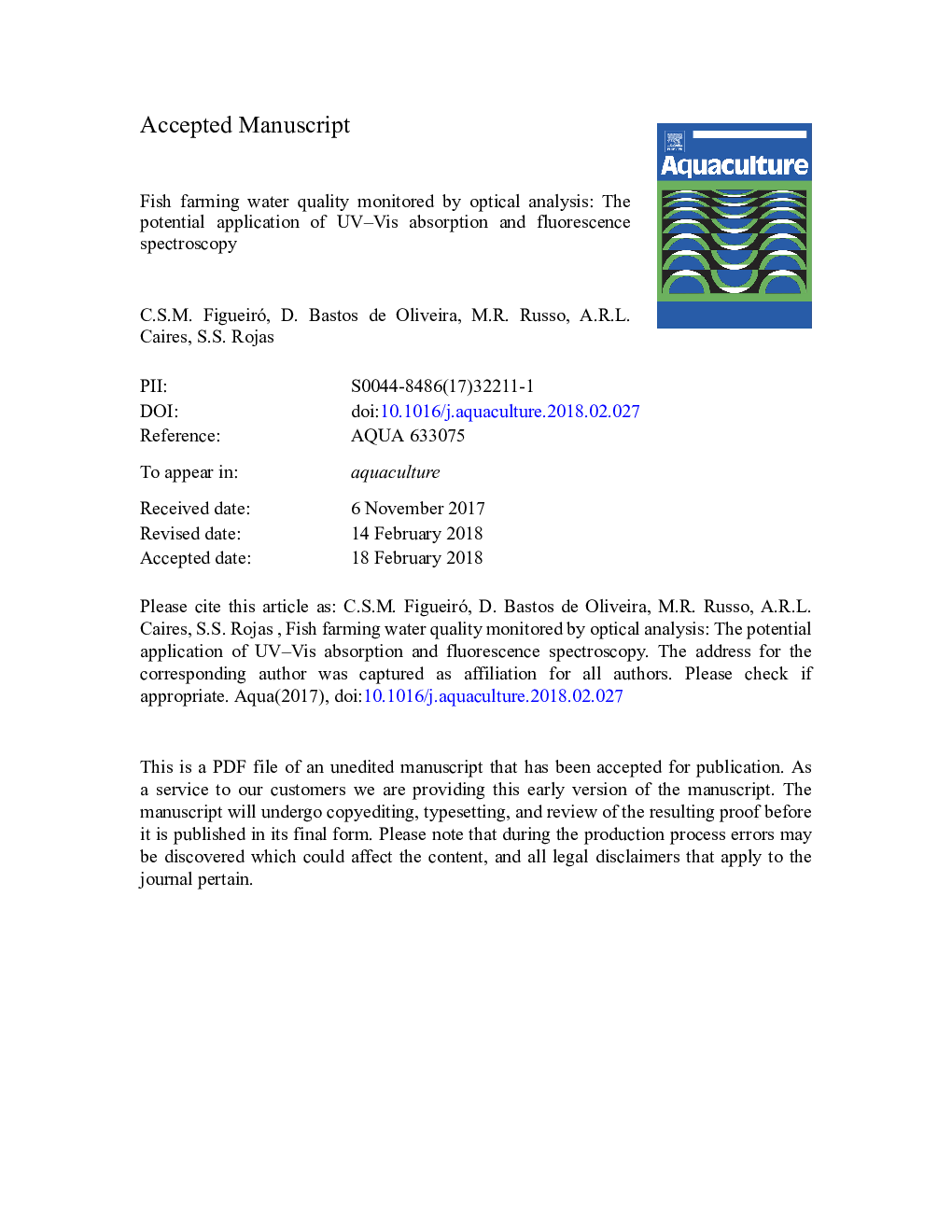| Article ID | Journal | Published Year | Pages | File Type |
|---|---|---|---|---|
| 8493329 | Aquaculture | 2018 | 28 Pages |
Abstract
In the present study, the fish farming water quality was determined by conventional limnological analysis during a Nile tilapia production cycle in four plastic-lined ponds. The water quality was obtained by measuring the dissolved oxygen, pH, water temperature, electrical conductivity, total dissolved solids and water transparency. In addition, optical measurements based on fluorescence and UV-Vis absorption spectroscopies were also carried out, aiming to determine the potential application of these techniques to fish farming water quality monitoring. The presence of proteins and chlorophyll (Chl) were optically monitored throughout the fish production cycle. The results demonstrated that emission of protein-like fluorescence, mainly attributed to the tryptophan in the 300-400â¯nm range, when excited between 220 and 290â¯nm, presented higher fluorescence intensity when compared to Chl emission. The optical results also revealed an unexpected emission band in two different ponds. This emission may be associated to the fluorescence of the phycoerythrin (PE), an auxiliary pigment to the chlorophyll, which are commonly found in cyanobacteria. This result was also confirmed by UV-Vis absorption data and by the analysis of stomach content of the fishes during the production cycle. In summary, our study has demonstrated that fluorescence spectroscopy and UV-Vis absorption techniques have a great potential to a fast qualitative analysis of water quality in fish farming.
Related Topics
Life Sciences
Agricultural and Biological Sciences
Aquatic Science
Authors
Figueiró C.S.M., Bastos de Oliveira D., Russo M.R., Caires A.R.L., Rojas S.S.,
